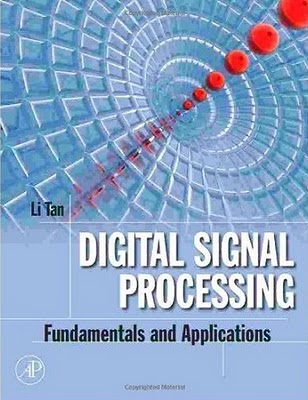
Torrent Signal Processing First Textbook
Jan 1, 2006 - Blackledge's book Digital Signal Processing will enable many people to make use. Signal Processing' which was first established at Cranfield. 6.4.1 First-Order Filters, 242 6.4.2 Parametric Resonators and Equalizers, 244. 8.3 Noise Reduction and Signal Enhancement, 382 8.3.1 Noise Reduction Filters, 382. The book’s emphasis is more on signal processing than discrete-time system theory, although the basic principles of the latter are adequately covered.

For introductory courses (freshman and sophomore courses) in Digital Signal Processing and Signals and Systems. Driving license renewal fee abu dhabi. Text may be used before the student has taken a course in circuits. DSP First and it's accompanying digital assets are the result of more than 20 years of work that originated from, and was guided by, the premise that signal processing is the best starting point for the study of electrical and computer engineering. The 'DSP First' approach introduces the use of mathematics as the language for thinking about engineering problems, lays the groundwork for subsequent courses, and gives students hands-on experiences with MATLAB. The Second Edition features three new chapters on the Fourier Series, Discrete-Time Fourier Transform, and the The Discrete Fourier Transform as well as updated labs, visual demos, an update to the existing chapters, and hundreds of new homework problems and solutions. Three chapters on Discrete-Time Fourier Transform, and the The Discrete Fourier Transform.
Updated labs, visual demos, an update to the existing chapters, and hundreds of new homework problems and solutions. • Four chapters on analog signal processing systems, plus many updates and enhancements. • Creative use of innovative, computer technology—Makes abstract content more accessible, enabling it to reach a wider range of students. Unique features from this work, such as visual learning animations, hands-on demonstrations, and integrated laboratories in multimedia format are widely hailed as essential learning tools for mastering fundamental concepts. • Many actual signals and sound files can be viewed with a Web browser or imported into MATLAB. • Archive of hundreds of solved exercises on the Companion Website, plus much more.
About the Author(s) Dr. McClellan received the B.S. Degree in Electrical Engineering from Louisiana State University in 1969 and the M.S. Degrees from Rice University in 1972 and 1973, respectively.
During 1973-4 he was a member of the research staff at M.I.T.' S Lincoln Laboratory. He then became a professor in the Electrical Engineering and Computer Science Department at M.I.T. In 1982, he joined Schlumberger Well Services where he worked on the application of 2-D spectral estimation to the processing of dispersive sonic waves, and the implementation of signal processing algorithms for dedicated high-speed array processors. He has been at Georgia Tech since 1987. McClellan is a Fellow of the IEEE and he received the ASSP Technical Achievement Award in 1987, and then the Signal Processing Society Award in 1996.
Schafer is an electrical engineer notable for his contributions to digital signal processing. After receiving his Ph.D. Degree at MIT in 1968, he joined the Acoustics Research Department at Bell Laboratories, where he did research on digital signal processing and digital speech coding. He came to the Georgia Institute of Technology in 1974, where he stayed until joining Hewlett Packard in March 2005. He has served as Associate Editor of IEEE Transactions on Acoustics, Speech, and Signal Processing and as Vice-President and President of the IEEE Signal Processing Society. He is a Life Fellow of the IEEE and a Fellow of the Acoustical Society of America. He has received the IEEE Region 3 Outstanding Engineer Award, the 1980 IEEE Emanuel R.